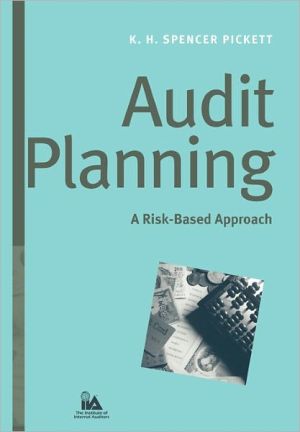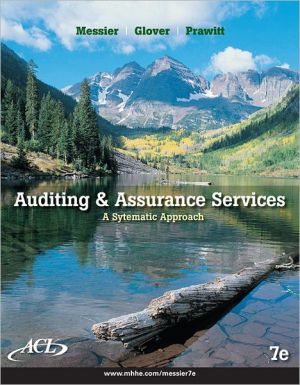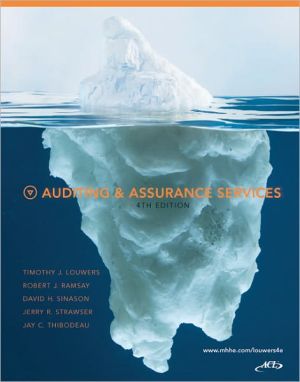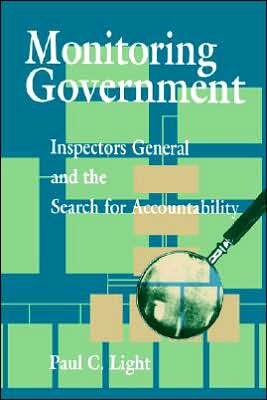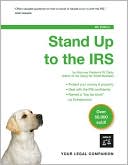Audit Planning: A Risk-Based Approach
More now than ever before, auditing is in the spotlight; legislators, regulators, and top executives in all types of businesses realize the importance of auditors in the governance and performance equation. Previously routine and formulaic, internal auditing is now high-profile and high-pressure! Being an auditor in today's complex, highly regulated business environment involves more than crunching the numbers and balancing the books—it requires ensuring that appropriate checks and balances...
Search in google:
Risk-based audit planning focuses on the strategic, regulatory, financial, and business risks to which an organization has exposure. In an increasingly visible and valuable role, today's internal auditors are expected to examine, evaluate, report, and recommend improvements on management's risk management processes. Risk-based auditing can maximize the impact of audit's assurance and consulting work. The second book in the new Practical Auditor Series—cobranded with The Institute of Internal Auditors (IIA)— Audit Planning: A Risk-Based Approach helps internal auditors plan a dynamic, proactive audit. With step-by-step guidance, it covers: New approaches to setting the audit context and plansA step-by-step plan for addressing corporate risk in the audit planPractical ways to implement some of the IIA's professional standardsSample models that break down and explain complicated conceptsControls and reviews that ensure that work meets quality standardsCase studies of various auditsDiagrams and checklists to help build real-world auditing skillsThere is no "one size fits all" audit. The goal is to customize a dynamic, defensible audit plan that addresses the needs and the risks of the particular organization. This book provides the practical guidance and tools to get auditors up to speed quickly with a real-world, risk-based approach to auditing.
Preface. List of Abbreviations. Chapter 1: Why Risk-Based Audit Planning? Introduction. Risk-Based Audit Planning Model: Phase One. Risk-Based Audit Planning Model: Phase Two. Risk-Based Audit Planning Model: Phase Three. Risk-Based Audit Planning Model: Phase Four. Risk-Based Audit Planning Model: Final. Summary. Chapter 2: Basic Planning Techniques. Introduction. Basic Planning Model: Phase One. Basic Planning Model: Phase Two. Basic Planning Model: Phase Three. Basic Planning Model: Phase Four. Basic Planning Model: Final. Summary. Chapter 3: Using the Corporate Risk Register. Introduction. Corporate Risk Register Model: Phase One. Corporate Risk Register Model: Phase Two. Corporate Risk Register Model: Phase Three. Corporate Risk Register Model: Phase Four. Corporate Risk Register Model: Final. Summary. Chapter 4: The Annual Audit Plan. Introduction. Annual Audit-Planning Model: Phase One. Annual Audit-Planning Model: Phase Two. Annual Audit-Planning Model: Phase Three. Annual Audit-Planning Model: Phase Four. Annual Audit-Planning Model: Final. Summary. Chapter 5: Engagement Planning. Introduction. Engagement Planning Model: Phase One. Engagement Planning Model: Phase Two. Engagement Planning Model: Phase Three. Engagement Planning Model: Phase Four. Engagement Planning Model: Final. Summary. Chapter 6: Project Management. Introduction. Project Management Planning Model: Phase One. Project Management Planning Model: Phase Two. Project Management Planning Model: Phase Three. Project Management Planning Model: Phase Four. Project Management Planning Model: Final. Summary. Chapter 7: Keeping the Accent on Risk. Introduction. Risk Focus Model: Phase One. Risk Focus Model: Phase Two. Risk Focus Model: Phase Three. Risk Focus Model: Phase Four. Risk Focus Model: Final. Summary. Chapter 8: A Holistic Approach to Risk-Based Audit Planning. Introduction. Holistic Risk-Based Audit-Planning Model: Phase One. Holistic Risk-Based Audit-Planning Model: Phase Two. Holistic Risk-Based Audit-Planning Model: Phase Three. Holistic Risk-Based Audit-Planning Model: Phase Four. Holistic Risk-Based Audit-Planning Model: Final. Summary. Appendix A: Applying an RBAP Diagnostic Tool. Index.
